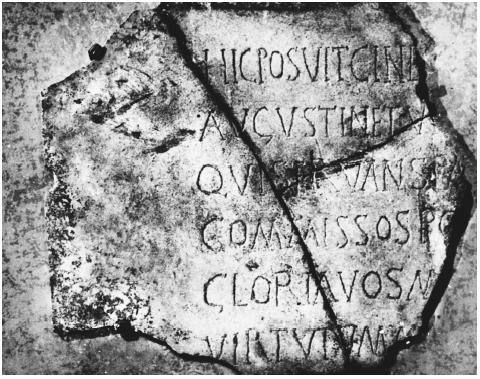Epitaphs
For hundreds if not thousands of years, the epitaph has been a significant part of the death ritual. Before the development of written language and adequate tools for carving, the grave was marked with such items as sticks and rocks. In his Death and Dying in Central Appalachia (1994), the scholar James K. Crissman notes that in the first one hundred years of Central Appalachian society, marking a grave using any form of language involved taking a sharp-pointed rock and carving the initials of the deceased on another rock. Most likely, this was the way the first human societies expressed themselves when they developed the ability to use language symbols.
Archaeological evidence and written and pictorial records show that memorials were an important part of ancient societies such as the Egyptians, Greeks, and Romans. The Greeks used eight forms of grave markers including round columns, rectangular slabs, stelae (carved or inscribed stones), shrine-shaped stones, huge rectangular stone blocks, marble vases, square or round receptacles for cremains, and sarcophagi (stone coffins) (Bardis 1981). Many of these early societies employed sepulchral iconography or the use of beautiful, elaborate, and detailed scenes or panoramas portraying the life of the decedent, as well as written inscriptions such as "farewell" (Crissman 1994).
The epitaph, or inscription at a grave or memorial in memory of someone deceased, exists for a variety of reasons and in a multiplicity of forms. While the use of epitaphs predates the modern era, the French thanatologist Philippe Ariès states that "the practice of marking the exact site of a grave by means of an inscription did not become widespread until the end of the eighteenth century" (Ariès 1982, p.78).
Grave markings usually act to provide information about the deceased, to memorialize, and to relay a message to the living. In the twenty-first century most tombstones contain some sort of biographical information about the deceased, including the name of the decedent, the date of birth, and the date of death. In addition to this information, many markers include an inscription in verse or prose upon a marker. There is clearly a memorial aspect contained in some epitaphs. For instance, the grave of the American reformer Susan B. Anthony states, "Liberty, Humanity, Justice, Equality" and epitaphs of soldiers killed in war often include lines such as, "He gave his life for his country" or "Who died in the service of his country." Another function of epitaphs is to attempt the establishment of symbolic immortality by relaying a message to the living. One of the more famous epitaphs states:
Remember friend as you passby
As you are now so once was I.
As I am now you will surely be
Prepare thyself to follow me.
(Gazis-Sax 2001, p.1)
Depending on the culture in which the deceased lived, the epitaph can take on several forms, ranging from the religious to the humorous. Some of the most common epitaphs contain only one line such as, "Gone but not forgotten," "Rest in peace," and "In remembrance of." Many epitaphs contain a religious theme emphasizing comfort and future reunions in heaven. Some examples of these include, "Precious Lord take my hand," "Prepare to meet me in Heaven," and "The Lord is my Shepherd I shall not want." In contrast to the religious messages, humorous epitaphs focus more on the manner of death, or relationships with the living, such as, "I told you I was sick," "Gone, but not forgiven," and "Here lies a father of twenty-nine, he would have had more but didn't have time." (Spiegl 1982).
The practice of using long epitaphs, whether religious or humorous, has not been as widely practiced in the United States as it has been in Europe. Furthermore, twenty-first-century epitaphs are much simpler than those of the past. Even though the practice of lengthy epitaphs has fallen

Bibliography
Ariès, Philippe. The Hour of Our Death. New York: Vintage Books, 1982.
Bardis, Panos D. History of Thantology. Washington, DC: University Press of America, 1981.
Crissman, James K. Death and Dying in Central Appalachia. Urbana: University of Illinois Press, 1994.
Gumpert, Gary. Talking Tombstones and Other Tales of the Media Age. New York: Oxford University Press, 1987.
Rodabaugh, Tillman. Death and Dying: A Social-Psychological Perspective. Waco, TX: Baylor University, 1991.
Spiegl, Fritz. Dead Funny: Another Book of Grave Humor. London: Pan Books, 1982.
Internet Resources
Gazis-Sax, Joel. "The Epitaph Browser." In the City of the Silent [web site]. Available from www.alsirat.com/epitaphs/index.html .
JAMES K. CRISSMAN JOHNETTA M. WARD
E UGENICS
See B IOETHICS ; B LACK S TORK .
Comment about this article, ask questions, or add new information about this topic: